|
| |
FAMILY COENAGRIONIDAE
- This page contains information and pictures about Eastern Billabongflies that we found in the Brisbane area, Queensland, Australia.
They are also known as Eastern Dart.
-
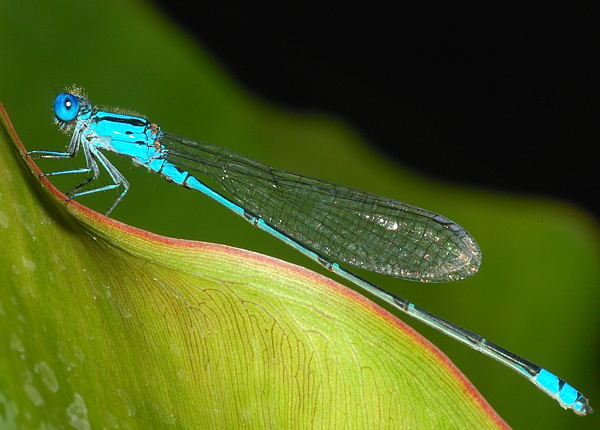 - Male, body length 25mm
-
- Eastern Billabongflies are small damselflies.
They can be found near slow running water or still water. They usually rest on
the plants either in the middle of ponds or at the water edges. The pictures in this
page are mostly taken at Wishart along Bulimba Creek and at the large ponds in
Mt Coot-tha Botanic Garden.
-

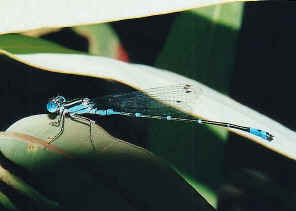 -
- The male damselfly is brightly blue in colour with black pattern on
abdomen. It looks similar to the Common Bluetail
and Blue Riverdamsel except Eastern
Billabongfly is smaller and with a blue bar on top of their eyes instead of two
blue dots. There are two black squares on its blue tail while Common
Bluetail and Blue Sprite's tails are all blue.
-
-

-
- The male Eastern Dart Damselfly has its blue thorax with black marks. Its long and slender abdomen is
black in colour with blue rings. There is the blue tip at the end of abdomen. The female
is the
same size and with pale blue to grayish-green in colour.
-
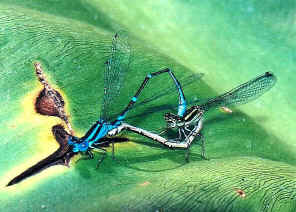
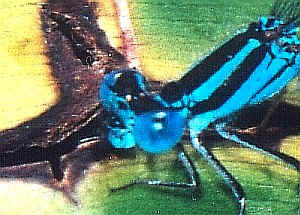 - Male and female Eastern Dart Damselflies in wheel position.
-
- More
information about damselfly reproduction can be found on the Mating Behaviour pages.
-
 -
- We took the above picture in Brisbane Botanic Garden on Oct 2004. The
damselfly had just emerged from last moulting. It was pale green in colour,
its body was weak and could not fly properly. Its body would be harden and turn into
blue colour within hours. Before this, the young
damselfly was quite vulnerable. The pale green colour helped it hiding among
plants during this dangerous period.
-
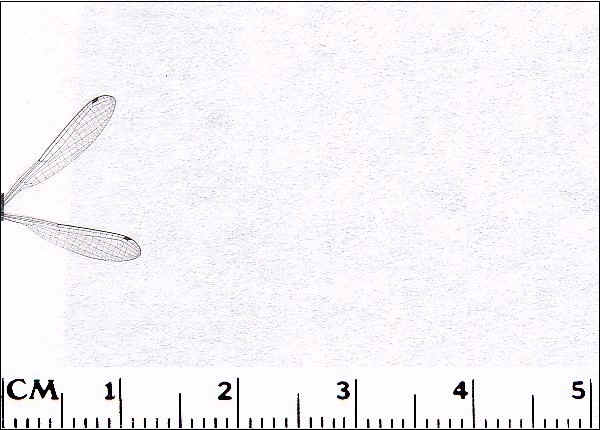 - Wings of Eastern Billabongfly
- Reference:
- 1. The Australian Dragonflies - CSIRO, Watson, Theisinger &
Abbey,1991, p128.
- 2. A
Field Guide to Dragonflies of South East Queensland - Ric Nattrass,
2006, p33.
- 3. The
Complete Field Guide to Dragonflies of Australia - CSIRO, GŁnther
Theischinger and John Hawking, 2006, p92.
-
Back to Top
| |
|








